For over six million years, the Colorado River flowed from the Never Summer mountains in what is now Rocky Mountain National Park, to the sea of Cortez- cutting through over a vertical mile of a vast landscape while carving majestic canyons along the way. When the Ute and Arapaho tribes came to the Grand Lake area, near the headwaters of the Colorado River, they saw what was once a raging river. But through transmountain diversions, like Colorado- Big Thompson, the river seen by early inhabitants is not the same river it is today.
At the turn of the Century, when spring snow melt occurred, the waters of the Colorado would fill the banks and flood mountain valleys. While on the other side of the Continental Divide, farmers and ranchers along the plains were starving for water. In 1933, the Greeley Chamber of Commerce formed a committee to survey a transmountain diversion that would tap into the Colorado River headwaters near Grand Lake.
The groups lobbying for the diversion- named Colorado- Big Thompson (C-BT)- got their way in 1938 when Congress approved the project. And 19 years later in 1957, the project was completed. The C-BT was the biggest transmountain water diversion the state of Colorado has ever seen.
 The water from the Upper Colorado flows from Lake Granby (which acts as the storage facility), then it is is pumped into Shadow Mountain Reservoir where it then flows down into Grand Lake. From Grand Lake, the water then is pumped through the 13.1 mile long Alva B. Adams Tunnel under the Continental Divide and flows into the Big Thompson River. From there, the water drops into power plants that supply the pumps on the western slope.
The water from the Upper Colorado flows from Lake Granby (which acts as the storage facility), then it is is pumped into Shadow Mountain Reservoir where it then flows down into Grand Lake. From Grand Lake, the water then is pumped through the 13.1 mile long Alva B. Adams Tunnel under the Continental Divide and flows into the Big Thompson River. From there, the water drops into power plants that supply the pumps on the western slope.
In it's first year, 230,000 acre feet were transferred across the divide annually. Since then, the number of acre feet taken from the Upper Colorado is around 213,000 according to Northern Water. The tunnel can also contain flows of 550 cubic feet per second.
While the project is able to keep the eastern slope alive during drought years and helps support Colorado's agriculture economy, the Colorado River itself is harmed. In order to build the C-BT, Green Mountain reservoir needed to be constructed along the Blue River. This was built in order to store water that the C-BT took out of the Colorado.
However, there are about 34 miles of river between Lake Granby- where water is taken- and the Blue River confluence- where the water is returned. This leaves a "hole" in the river. Along this stretch, the river and it's fishery is slowing fading away.
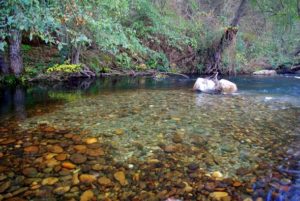 As the flows of the Upper Colorado are depleted by the diversion projects, the natural cleansing of the river fails to occur. Each spring, rivers experience flushing flows- an increase in water flow that breaks up sediment buildup along the stream bed. When the river isn't able to clean itself from sediment buildup between cobblestone, it doesn't allow for insects to hatch or fish to spawn.
As the flows of the Upper Colorado are depleted by the diversion projects, the natural cleansing of the river fails to occur. Each spring, rivers experience flushing flows- an increase in water flow that breaks up sediment buildup along the stream bed. When the river isn't able to clean itself from sediment buildup between cobblestone, it doesn't allow for insects to hatch or fish to spawn.
Insects in the river hatch from the bottom of the cobblestone, but when the sediment concretes between the rocks, they aren't able to access the underside of the rock and hatch- leaving limited food sources for the trout in the water. The trout also needs the rocks to spawn as they turn rocks over to create their redds, which can't be done when sediment cements the rocks in place.
Under Senate Document 80- the document approving the C-BT and requiring the construction of Green Mountain reservoir- the document also states that the project needs, "to preserve the fishing and recreational facilities and the scenic attractions of Grand Lake, the Colorado River, and the Rocky Mountain National Park."
 The West needed water to expand. Currently, 80 percent of Colorado's population is on the east of the Divide while 80 percent of the water is on the west side. This means that in order to thrive, water needed to be diverted. The C-BT opened the door to other transmountain diversions- including the Moffat Tunnel from the Fraser River, another tributary of the Upper Colorado headwaters.
The West needed water to expand. Currently, 80 percent of Colorado's population is on the east of the Divide while 80 percent of the water is on the west side. This means that in order to thrive, water needed to be diverted. The C-BT opened the door to other transmountain diversions- including the Moffat Tunnel from the Fraser River, another tributary of the Upper Colorado headwaters.
While these diversions help the east slope, they are hurting the river. Through collaboration work among TU and water suppliers with hemp from very passionate individuals, we are working together to bring the river back to health.
The river will never be what is once was when the Ute and Arapaho tribes hunted and fished along its shores, but the river can return to a health that is good for people, insects and trout alike.






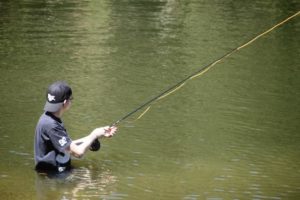 The first day began with a basic entomology class on bugs and their life cycles. Volunteers and camp leaders also showed the students what fish eat, and the flies that represent these species and phases. All of this was don in order to give students a better understanding of what the term “fly” fishing actually means.
The first day began with a basic entomology class on bugs and their life cycles. Volunteers and camp leaders also showed the students what fish eat, and the flies that represent these species and phases. All of this was don in order to give students a better understanding of what the term “fly” fishing actually means.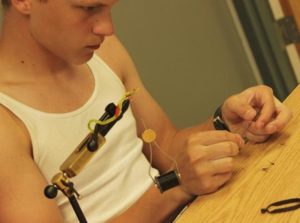
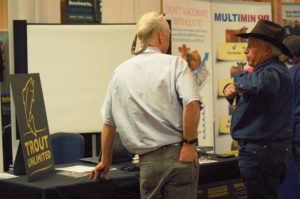
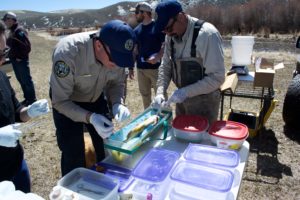 For this project, the chapter and partners purchased 15 RF tags that were surgically implanted into various fish in Tomichi Creek, a tributary of the Gunnison River. By attaching the RF tags to the fish in the creek, the chapter, CPW, and the partners involved could follow these trout and see what kind of movement they did and provide more information as to what causes fish to move.
For this project, the chapter and partners purchased 15 RF tags that were surgically implanted into various fish in Tomichi Creek, a tributary of the Gunnison River. By attaching the RF tags to the fish in the creek, the chapter, CPW, and the partners involved could follow these trout and see what kind of movement they did and provide more information as to what causes fish to move.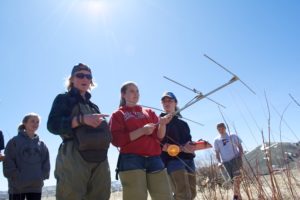 "We have had a few fish travel a pretty good distance. One fish in particular, which was tagged at the Lower Tagging Location, hung out in the same area we had released him in for several weeks. Then right around the same time the runoff started picking up he bolted upstream and was last detected near the confluence of Tomichi and Cochetopa Creeks. A run of over eight miles," said Wiles. "Now there is another tagged fish that has run nearly as far. This leads us to consider that the two missing fish may be farther up the Tomichi. This has effectively expanded our search area from a five mile stretch to who knows how big. Careful what you wish for."
"We have had a few fish travel a pretty good distance. One fish in particular, which was tagged at the Lower Tagging Location, hung out in the same area we had released him in for several weeks. Then right around the same time the runoff started picking up he bolted upstream and was last detected near the confluence of Tomichi and Cochetopa Creeks. A run of over eight miles," said Wiles. "Now there is another tagged fish that has run nearly as far. This leads us to consider that the two missing fish may be farther up the Tomichi. This has effectively expanded our search area from a five mile stretch to who knows how big. Careful what you wish for."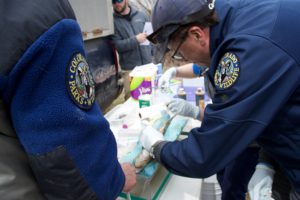 With help from a $2,500 grant from New Belgium Brewing, the chapter is expanding the project to include a website that will have a map of the Tomichi and points to where each fish is located.
With help from a $2,500 grant from New Belgium Brewing, the chapter is expanding the project to include a website that will have a map of the Tomichi and points to where each fish is located.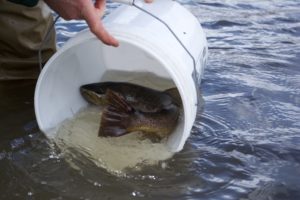 “I wanted to get the program going locally to help students develop more awareness and appreciation for our watershed and I thought the experience might generate some interest in resource management career paths,” said Jesse Kruthaupt, Upper Gunnison Project Specialist for TU. “In addition to those benefits, understanding trout behaviors in this area will be a very useful discussion making and monitoring tool for future restoration work. TU couldn’t have done this alone, Colorado Parks and Wildlife and the Upper Gunnison River Water Conservancy District deserve a big ‘Thank You’ for helping to make this happen.”
“I wanted to get the program going locally to help students develop more awareness and appreciation for our watershed and I thought the experience might generate some interest in resource management career paths,” said Jesse Kruthaupt, Upper Gunnison Project Specialist for TU. “In addition to those benefits, understanding trout behaviors in this area will be a very useful discussion making and monitoring tool for future restoration work. TU couldn’t have done this alone, Colorado Parks and Wildlife and the Upper Gunnison River Water Conservancy District deserve a big ‘Thank You’ for helping to make this happen.” By: Ameen Hosain
By: Ameen Hosain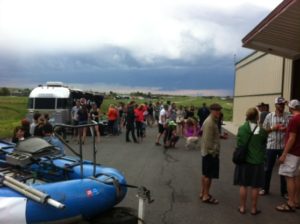
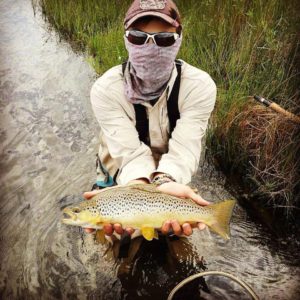
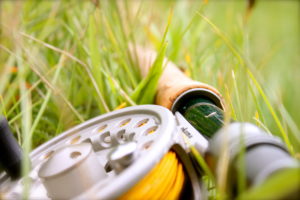

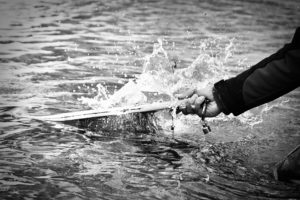 Thus it is best to keep a fish in the water as much as possible, with a photo being taken swiftly- holding the fish only a few inches above the water.
Thus it is best to keep a fish in the water as much as possible, with a photo being taken swiftly- holding the fish only a few inches above the water.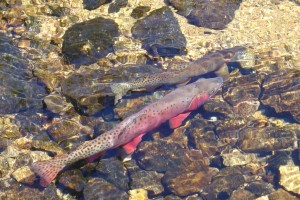 Choosing whether or not to fish to spawning trout is an issue that sees much debate, however with conservation in mind,
Choosing whether or not to fish to spawning trout is an issue that sees much debate, however with conservation in mind, According to
According to 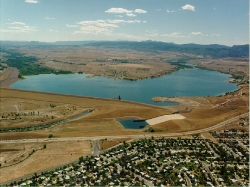 If not one who collects rainwater, another way to assist in the maintenance of healthy water levels is to pay close attention to sprinkler systems; making sure to turn off systems when it rains, and ensuring that they are only used a maximum of three times a week. These things are easy to do and are highly recommended by Denver Water in order to keep Colorado’s reservoirs in good shape.
If not one who collects rainwater, another way to assist in the maintenance of healthy water levels is to pay close attention to sprinkler systems; making sure to turn off systems when it rains, and ensuring that they are only used a maximum of three times a week. These things are easy to do and are highly recommended by Denver Water in order to keep Colorado’s reservoirs in good shape. "Northern pike are aggressive predators with big appetites and if their population continues to grow in Green Mountain Reservoir, that will have profound impact on the fish we have stocked there, as well as potential impacts to the endangered native fish we are currently trying to recover," said CPW's Jon Ewert, aquatic biologist from Hot Sulphur Springs.
"Northern pike are aggressive predators with big appetites and if their population continues to grow in Green Mountain Reservoir, that will have profound impact on the fish we have stocked there, as well as potential impacts to the endangered native fish we are currently trying to recover," said CPW's Jon Ewert, aquatic biologist from Hot Sulphur Springs.
